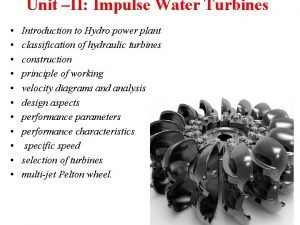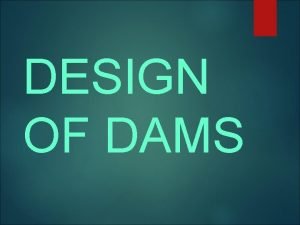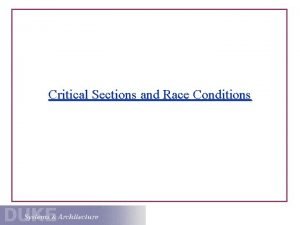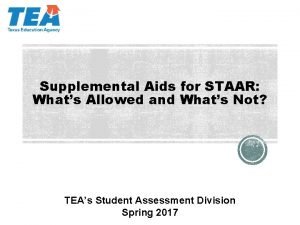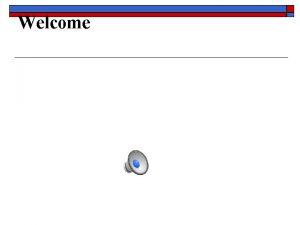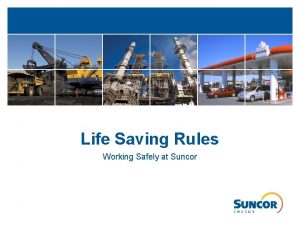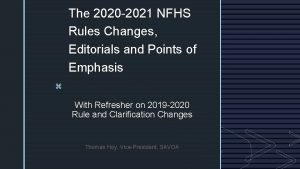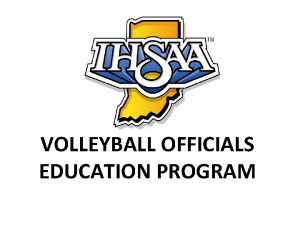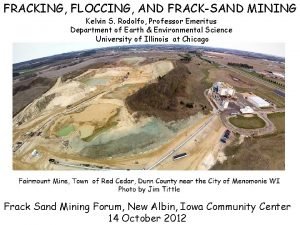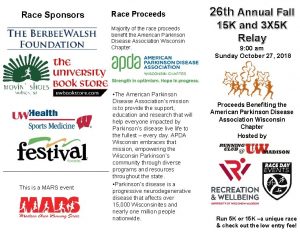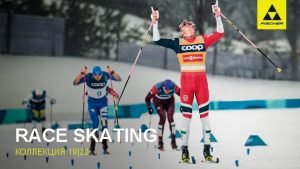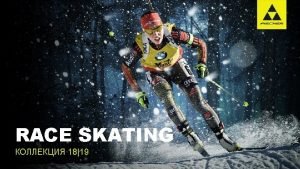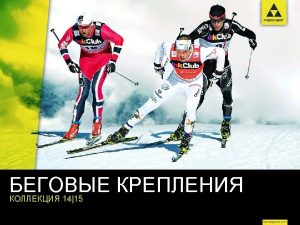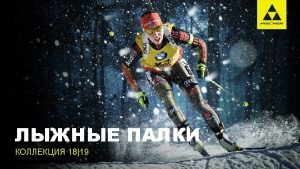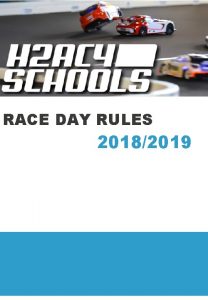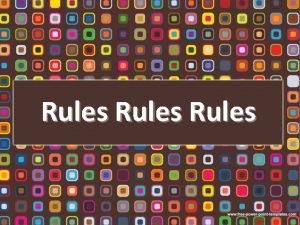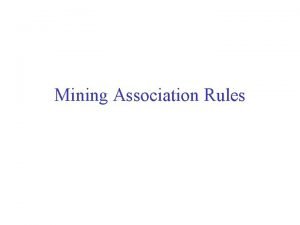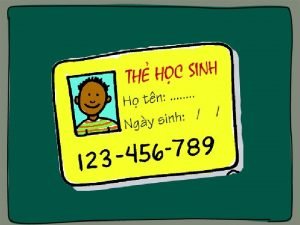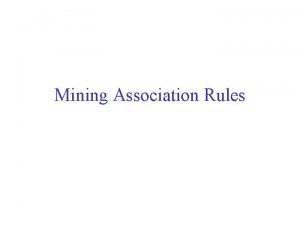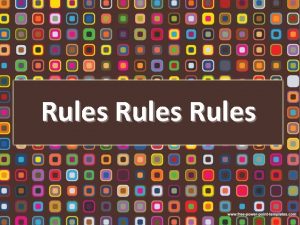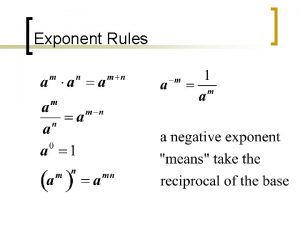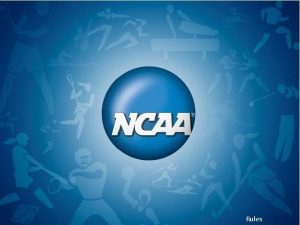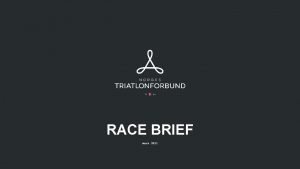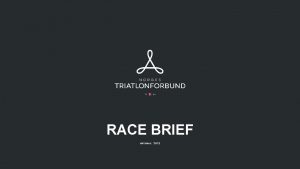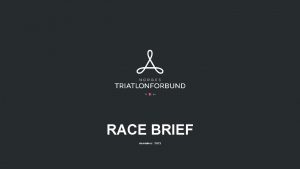2021 Race Rules and the Race at the






















- Slides: 22

2021 Race Rules and the Race at the Texas Motor Speedway William Shih, Deputy Race Director 1

EVENT UPDATES • The Rules are periodically clarified or amended to meet the needs of the specific race. • Rule 29 requires solar car teams to make periodic reviews of these updates to stay up-to-date. Fall Webinar Series - Webinar 1 © Solar Challenge Foundation 2

Rules Overview • Do: • Keep copies of rules throughout workshop • Following engineering lifecycle: requirements, design, implementation, verification • Don’t: • Just read once or all in one sitting • Look at another car’s design and assume it complies with rules (grandfather; waivers) • Changes from 2019 rules noted in Blue Fall Webinar Series - Webinar 1 © Solar Challenge Foundation 3

Registration Sections 1 – 3: Purpose, Administration, Entries and Registrations Registration Documents and Registration Fee requirement March 1 st: (1) Detailed CAD drawings showing mechanical structure, including “crush zones. ” Crush zones must be clearly labeled. (2) Detailed schematic / wiring diagram showing electrical system. (3) Digital team photo [emailed] (4) Manufacturer’s data sheets for batteries showing type & capacity (5) Manufacturer’s data sheets for solar array, including list price (6) Manufacturer’s data sheets for motor and motor controller (7) Manufacturer’s data sheets for array and battery cutoff switches (8) Manufacturer’s data sheets for main fuses (9) Manufacturer’s data sheets for wheels and brakes Digital and hard copies required by March 1 st. Fall Webinar Series - Webinar 1 © Solar Challenge Foundation 4

Rule 3. 8 – Design of Solar Car • It is the intent of the event that the solar cars be designed and constructed by high school students on the solar car team. • No portion of another vehicle’s frame may be reused in a solar car unless the team re-engineers/ modifies the frame to fit the team’s solar car design or to install separate off-the-shelf components. Fall Webinar Series - Webinar 1 © Solar Challenge Foundation 5

Rule 3. 5 – Qualifier § Qualifier for the 2021 Race will include: (1) 3 -Day Scrutineering (2) Stage One – First Day of Racing § The top teams in each Solar Challenge Racing Division will move on to the three-day Stage Two of racing. [Approximately 25 teams] § The winner in each division will be the team that accumulates the most laps in Stage 1 and 2. § All teams will receive an Official Race Ranking Fall Webinar Series - Webinar 1 © Solar Challenge Foundation 8

Section 10: DIVISIONS • Classic Division: No hub motors; lead-acid batteries; solar modules at ≤ 20% efficient • Advanced Classic Division: 3 or more years in classic with same basic vehicle structure and major components • Advanced Division: Hub motors; prefabricated solar car molds; advanced battery chemistries • Electric-Solar Powered Car Division: Solar cells on charging station; Classic Division technology; 2 x 2 k. Wh battery packs • Cruiser Division: Seating for four; totally enclosed; solar array integrated into the skin of the vehicle; workable trunk Fall Webinar Series - Webinar 1 © Solar Challenge Foundation 9

Rule 5. 2. x – Roll Cage, Crush Zone, Roll Bar § Roll Cage – rigid protection encompassing entire driver; minimum OD of 1. 9 cm; minimum 5 cm clearance to driver § Crush Zone – structural components designed to collapse on impact; minimum 15 cm clearance to driver; minimum coverage § Roll Bar – protects driver in event of rollover; continuous piece of metal; minimum 5 cm vertical clearance; minimum OD of 5 cm; minimum wall thickness based on material; welded to dframe Fall Webinar Series - Webinar 1 © Solar Challenge Foundation 10

Roll Cage / Crush Zone Details • Both Roll Cage and Crush Zone must encompass the entire driver • Crush zone are structural components designed to collapse on impact • Roll cage structure protects driver in event of collision; should not deform Fall Webinar Series - Webinar 1 © Solar Challenge Foundation 11

Section 5. 4/5. 7 – Electrical • Rule 5. 4 (Battery): 5 k. Wh max at 20 hr discharge rate; terminals must have locking washers (see 5. 7. 3 below). • For Lithium-based chemistries, use nominal (1 C) capacity • Rule 5. 4. 2 (Main Fuse): 125% of expected peak current, separate enclosure; rated as appropriate for DC voltage • “Fast Blow” or “Very Fast Blow” no longer required • Rule 5. 4. 3 (Enclosures): Rigid, must have forced-air ventilation; no venting into driver’s compartment • No forced air ventilation needed for lithium-based batteries • Enclosure cannot be located at the front of vehicle frame • Rule 5. 7. 1 (Wire): Starting in 2022 (when relays/contactors are required), no HV wiring in driver’s compartment • Rule 5. 7. 3 (Connections): Connections conducting > 36 V must be secured by locking washer Fall Webinar Series - Webinar 1 © Solar Challenge Foundation 12

Rule 5. 4. 5 – Disconnect Switches • Two sets of two switches required • Motor Disconnect / Array Disconnect • Internal (“Driver”), External • Must interrupt full load current at system voltage • For 2021, can either use directly operated switch or relay/contactor • Required for 2022 Fall Webinar Series - Webinar 1 © Solar Challenge Foundation 13

Relay/Contactor Circuit Fall Webinar Series - Webinar 1 © Solar Challenge Foundation 14

Section 5. 12 – Lights/Horn • Rule 5. 12. 1 - Lighting • Stop (“Brake”) Lights must be red; visible at 100 meters • Front/Rear Turn indicators must be amber; visible at 30 meters • Therefore, car must have 6 total lights – two red stop lights and four amber turn indicators • Rule 5. 12. 2 – Audible Warning • Mount as far to the front as possible; face forwards • Required to be used when overtaking another solar car; make sure it’s loud enough and there’s enough batteries! Fall Webinar Series - Webinar 1 © Solar Challenge Foundation 15

Rule 5. 13 – Driver Safety • (a) Safety Belt must be 5 point lap/shoulder harness; attached to structural member per manufacturer’s instructions. • Implies mounting shoulder belts vertically lower than driver’s shoulder • (b) Cars with body shells must have shells attached to each other • (d) Windshield must protect entire head • (e) Cars equipped with appropriate fire extinguisher for battery chemistry Fall Webinar Series - Webinar 1 © Solar Challenge Foundation 16

Section 32 – Electric-Solar Powered Car • Simulates a “real world” solar application • Two passenger vehicle • Charging Station simulates permanent facility used to charge vehicle • Same rules as Classic Division, with exceptions • Rule 32. 2. 3 a (Configuration): Passengers must be seated side -by-side • Rule 32. 2. 6 (Battery): Two battery boxes, each with maximum 2 k. Wh capacity; safe battery exchange procedure • Rule 32. 2. 7 (Disconnects): Solar Car must have two Motor Disconnects; Charging Station must have single Array Disconnect • Must provide team member to monitor Charging Station during race hours • Rule 32. 7 (Team Assignments): Accomplish one special task each day to demonstrate real-world function Fall Webinar Series - Webinar 1 © Solar Challenge Foundation 17

Section 33 – Cruiser Division • Resemble regular passenger vehicle; provides opportunity to strategize based on number of passengers • Points = # of passengers x distance traveled • Same rules as Advanced Division, with exceptions • Must have four wheels • Must accommodate four passengers; each with immediate access to door for entry/exit (implies 2 x 2 configuration) • Rule 33. 3. 5 – Body must be completely enclosed • Rule 33. 3. 6 – Solar array must be integrated into car body • Rule 33. 3. 7 – Must have externally accessible storage space © Solar Challenge Foundation Fall Webinar Series - Webinar 1 18

Attire • Attire for all participants (including students, sponsors, chaperones, advisors, and others participating or traveling with team) in the Solar Challenge must be appropriate. • All participants must wear full-brimmed hats when in direct sunlight and closed-toe shoes throughout the event. Jeans are recommended for protection when working on the car and when kneeling on the ground. Shorts must be longer than the longest fingertip. Fall Webinar Series - Webinar 1 © Solar Challenge Foundation 19

Attire During the Solar Challenge • The Solar Challenge is based on the philosophy of “cooperation rather than competition. ” Our event focuses on bringing teams together through the camaraderie of the solar car experience. • In keeping with this philosophy, we ask that team attire, banners, and printed materials focus on their solar car team logo, “school pride, ” or community. • No attire, banners, or printed materials will be allowed that seek to promote any political candidate or philosophy. Failure to follow this guideline will result in the removal of the offending items and/or disqualification from the event. Fall Webinar Series - Webinar 1 © Solar Challenge Foundation 20

The Race at the Texas Motor Speedway Fall Webinar Series - Webinar 1 © Solar Challenge Foundation 21

Closed-Track Event Overview • Qualifier – All cars race on Day 1; Top ~25 teams continue on Day 2 -4 • Racing Hours • Classic, Advanced Classic, Electric-Solar: 9 am-12 pm, 2 pm-5 pm (6 hours) • Advanced, Cruiser: 9 am-5 pm (8 hours) • Teams get credit for laps completed within their allotted time • Teams released to start once a minute (staggered start), based on draw (first day) or previous day’s results (subsequent days) • Teams allocated garage area to work on cars, pit slot to observe car while running • Teams can utilize “driver change” area for simple tasks (driver change, provide water, change radio/supplemental batteries, etc. ) Fall Webinar Series - Webinar 1 © Solar Challenge Foundation 22

Track Layout SPOTTERS PIT LANE TRACK EXIT TRACK ENTRY SUPPORT PARKING TRAILER PARKING SECONDARY GARAGE PRIMARY GARAGE CHARGING STATIONS TMS USE ONLY TRAILER PARKING SUPPORT PARKING MEDIA CTR SUPPORT IN/OUT PIT SLOTS GENERAL & SPECTATOR PARKING TMS USE Fall Webinar Series - Webinar 1 © Solar Car. GARAGES Challenge Foundation TRANSFER BETWEEN 23

2021 Race Rules and the Race at the Texas Motor Speedway William Shih, Deputy Race Director 24
 Difference between impulse and reaction turbine
Difference between impulse and reaction turbine Head race and tail race
Head race and tail race Data race vs race condition
Data race vs race condition Staar grammar and mechanics rules
Staar grammar and mechanics rules Pictorial models of geometric figures
Pictorial models of geometric figures Aiba technical & competition rules 2021
Aiba technical & competition rules 2021 Suncor life saving rules 2020
Suncor life saving rules 2020 Nfhs volleyball uniform rules 2020-2021
Nfhs volleyball uniform rules 2020-2021 Volleyball
Volleyball Alabama high school athletic association eligibility rules
Alabama high school athletic association eligibility rules Truth tree branching rules
Truth tree branching rules Unlike traditional production rules, association rules
Unlike traditional production rules, association rules Hát kết hợp bộ gõ cơ thể
Hát kết hợp bộ gõ cơ thể Slidetodoc
Slidetodoc Bổ thể
Bổ thể Tỉ lệ cơ thể trẻ em
Tỉ lệ cơ thể trẻ em Gấu đi như thế nào
Gấu đi như thế nào Tư thế worms-breton
Tư thế worms-breton Hát lên người ơi alleluia
Hát lên người ơi alleluia Môn thể thao bắt đầu bằng chữ f
Môn thể thao bắt đầu bằng chữ f Thế nào là hệ số cao nhất
Thế nào là hệ số cao nhất Các châu lục và đại dương trên thế giới
Các châu lục và đại dương trên thế giới Công thức tính độ biến thiên đông lượng
Công thức tính độ biến thiên đông lượng
